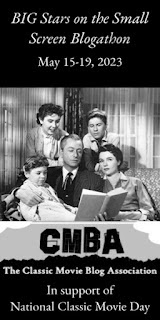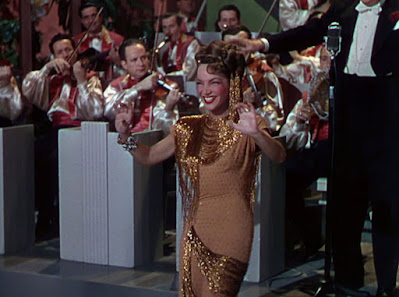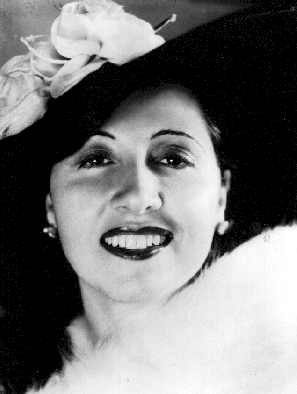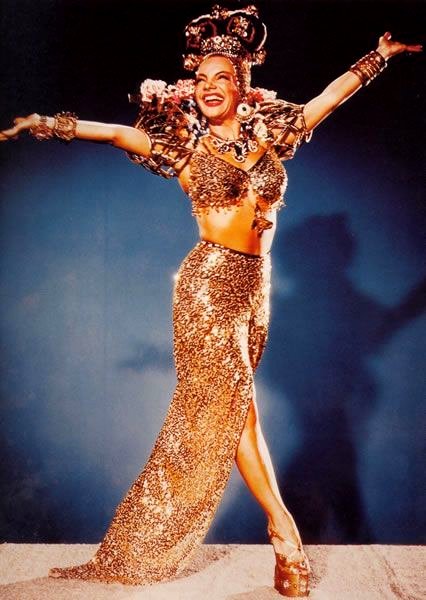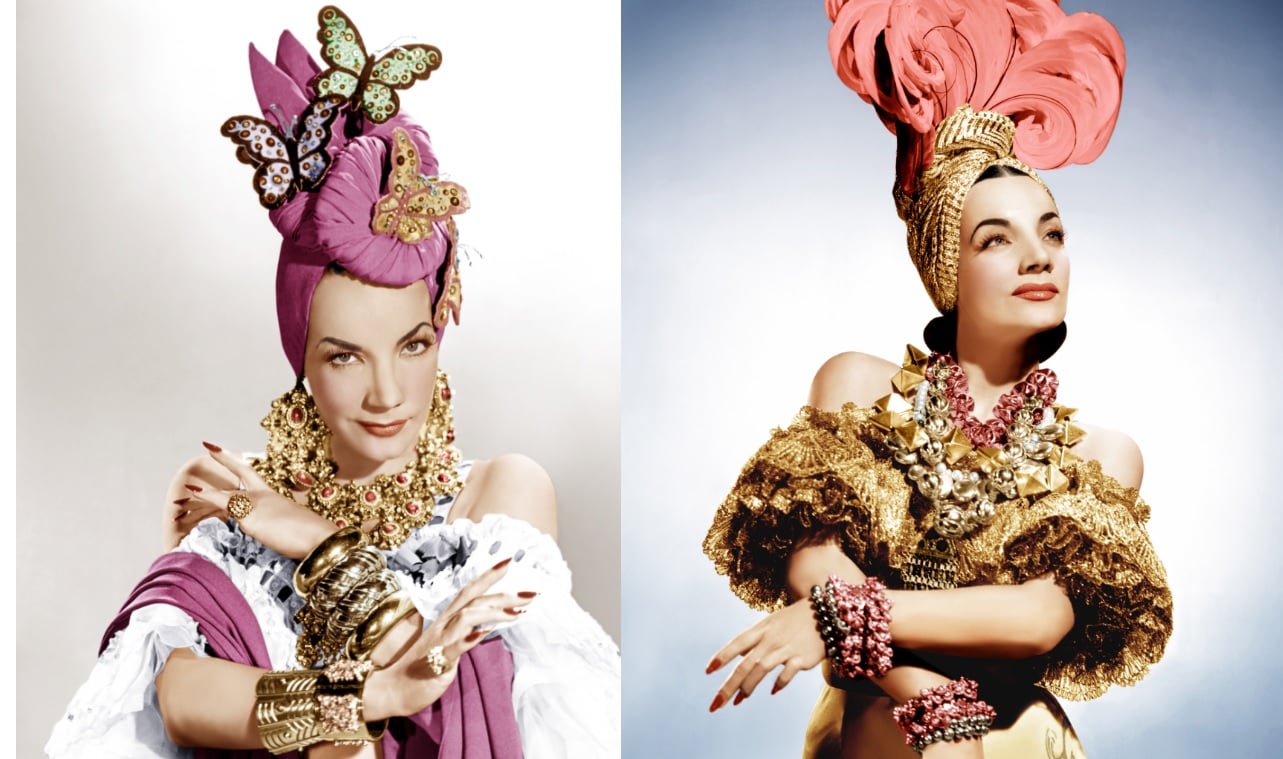A tale of two
Carmens
Ambas nasceram em Portugal, chegaram ao Brasil ainda crianças
e encontraram seu lugar na história do cinema brasileiro. Foram ambas batizadas
como Maria do Carmo, e ambas escolheram Carmen como nome artístico. Ambas
partiram cedo demais. Elas são a atriz, produtora e diretora Carmen Santos e a
multiartista Carmen Miranda – as duas Carmens do cinema brasileiro.
They were both born in Portugal, arrived in Brazil as
children and found their place in Brazilian film history. They were both
christened Maria do Carmo, and both chose Carmen as their stage name. They were
both gone too soon. They are actress, producer and director Carmen Santos and
entertainer Carmen Miranda – the two Carmens from Brazilian cinema.

Maria do Carmo Santos Gonçalves nasceu na cidadezinha de Vila
Flor em 1904 e chegou ao Rio de Janeiro aos oito anos de idade. Ainda
adolescente, parou de estudar e arrumou um emprego para ajudar a família.
Primeiro foi costureira numa loja, e depois se tornou vendedora. Em 1919, aos
15 anos, fez seu primeiro filme. A verdade sobre como ela foi descoberta é
incerta: primeiro ela declarou à imprensa que foi descoberta imitando Mary
Pickford na loja onde trabalhava. Em outra entrevista, disse que nunca havia
ido ao cinema antes de fazer o filme, e fez o teste por diversão. A verdade é
que ela conseguiu o papel principal em “Urutau” (1919), um filme que seria
exibido poucas vezes por seu diretor, o americano William Jansen. Quando deixou
o Brasil, Jansen levou consigo todas as cópias do filme.
Maria do Carmo Santos Gonçalves was born in the small
town of Vila Flor in 1904 and arrived in Rio de Janeiro at age eight. Barely a
teenager, she stopped studying and got a job to help her family. First she was
a seamstress at a shop, and later became a saleswoman. In 1919, at age 15, she
made her first film. The truth about how she was discovered is uncertain: at
first she told the press that she was discovered while imitating Mary Pickford
at the shop she worked in. In another interview, she said she had never been to
the movies before starring in one, and made a screen test for fun. The truth is
that she got the lead role in “Urutau” (1919), a film that would be screened
only a few times by its maker, the American William Jansen. When he left
Brazil, Jansen left with all the copies of the film.

Maria do Carmo Miranda da Cunha nasceu em Marco de Canaveses
em 1909 e chegou ao Brasil quando tinha apenas um ano de idade. Já adolescente,
empregou-se numa chapelaria. Em 1926 foi figurante em seu primeiro filme, “A
Esposa do Solteiro”, de Carlo Campogalliani. Em 1929 começou a cantar no rádio
e em 1930, depois de gravar o sucesso “Taí”, Carmen se tornou uma superestrela.
Ela foi a primeira pessoa a assinar um contrato com uma estação de rádio no
Brasil e logo se tornou a pessoa mais bem-paga no rádio. A transição para os
filmes era um caminho natural, e entre 1932 e 1939 fez seis filmes, aparecendo
como ela mesma na maioria. Infelizmente, quase todos estes filmes foram
perdidos.
Maria do Carmo Miranda da Cunha was born in Marco de
Canaveses in 1909 and arrived in Brazil when she was only one year old. As a
teenager, she found work in a hat store. In 1926 she was an extra in her first
film, Carlo Campogalliani’s “A Esposa do Solteiro” (“The Single Man’s Wife”).
In 1929 she started singing on the radio and in 1930, after recording the hit
song “Taí”, Carmen became a superstar. She was the first person to ever sign a
contract with a radio station in Brazil and soon she became the highest-paid
professional in radio. Her transition to the movies was a natural step, and
between 1932 and 1939 she made six films, most of them appearing as herself.
Unfortunately, almost all of these films are lost.

Carmen Santos chamou muito a atenção da imprensa com seu
primeiro filme. A imprensa faria dela uma superestrela – sem que um único filme
dela chegasse às telas na década seguinte. Seus dois esforços subsequentes
seriam dirigidos por Leo Merten, um realizador tchecoslovaco: “A Carne” (1924)
e “Mademoiselle Cinema” (1925). Em ambos, além de ser a estrela, Carmen era
também produtora, pois havia fundado sua própria produtora, a Films Artístico
Brasileiro, FAB. Ambos os filmes jamais são projetados, pois os negativos são
destruídos por incêndios e acidentes no laboratório onde eram revelados e
armazenados.
Carmen Santos garnered a lot of press attention with
her first work. The press would make her a superstar – without a single film
with her reaching the theaters in the following decade. Her next two efforts
would be directed by Leo Merten, a filmmaker from Czechoslovakia: “A Carne”
(“The Flesh”, 1924) and “Mademoiselle Cinema” (1925). In both, besides being
the star, Carmen was also a producer, as she had founded her own production
company, Films Artístico Brasileiro, FAB. Both movies never see the light of
the day, destroyed by fires and accidents at the movie lab.
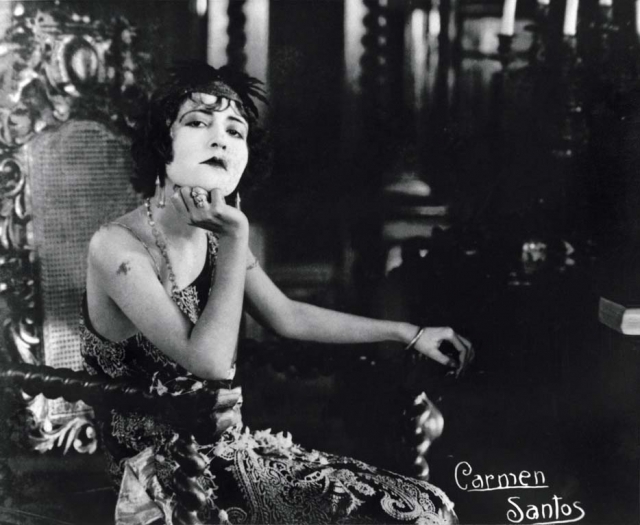
Em 1939, enquanto cantava no Cassino da Urca, Carmen Miranda
atraiu a atenção do empresário da Broadway Lee Shubert, que a contratou para
seu novo espetáculo. Carmen aceitou o convite de ir para a Broadway com uma
condição: ela queria levar consigo o grupo musical Bando da Lua. Com tudo acertado,
Carmen zarpou. Ela teve muito sucesso na Broadway, mas foi criticada por
brasileiros: algumas pessoas achavam que ela estava apresentando uma imagem
estereotipada do país e, quando ela voltou para fazer shows no Brasil, disseram
que ela voltou americanizada.
In 1939, while singing at the Casino da Urca, Carmen
Miranda called the attention of Broadway impresario Lee Shubert, who hired her
for his new revue. Carmen accepted the invitation to go to Broadway, with one
condition: she wanted to take with her the musical group Bando da Lua. When
everything was settled, off went Carmen. She had a lot of success on Broadway,
but was criticized by Brazilians: some people believed she was presenting a
stereotyped image of the country and, when she returned for shows in Brazil,
that she returned “Americanized”.

Carmen Santos poderia ter existido, mas ela já era uma
estrela, graças à proximidade com o jornalista Pedro Lima, da revista Cinearte.
Figurinha carimbada na revista, Carmen era sempre questionada sobre seus
próximos projetos. Estes próximos projetos vieram quando ela conheceu o
cineasta Humberto Mauro em Cataguases, Minas Gerais. Com Mauro ela finalmente
apareceu nas telas: ela protagonizou quatro dos filmes do diretor, “Sangue
Mineiro” (1929), “Favela dos Meus Amores” (1935), “Cidade Mulher” (1936) e “Argila”
(1942).
Carmen Santos could have given up, but she was already
a star, thanks to being close to journalist Pedro Lima from the magazine
Cinearte. An habitué at the magazine, Carmen was always questioned about her
next projects. The next projects came as she met filmmaker Humberto Mauro in Cataguases,
Minas Gerais. With Mauro she finally appeared on screen: she starred in four of
his films, “Sangue Mineiro” (“Blood from Minas”, 1929), “Favela dos Meus
Amores” (“My Love, the Shanty Town”, 1935), “Cidade Mulher” (“Woman City”,
1936) and “Argila” (“Clay”, 1942).

Carmen Miranda fez sucesso imediato na Broadway, e Hollywood
era o próximo passo, naturalmente. A “Brazilian Bombshell” fez seu primeiro
filme em Hollywood em 1940, “Serenata Tropical”. Durante a Segunda Guerra
Mundial, e graças à Política da Boa Vizinhança, Carmen Miranda fez oito filmes.
Em março de 1941, ela colocou as marcas de suas mãos e pés na calçada do
Grauman’s Chinese Theater, tornando-se a primeira pessoa da América Latina a
fazê-lo.
Carmen Miranda was an instant hit on Broadway, and
Hollywood was the natural next step. The “Brazilian Bombshell” made her first
film in Hollywood in 1940, “Down Argentine Way”. During World War II, and
thanks to the Good Neighborhood Policy, Carmen Miranda made eight movies. In
March of 1941, she imprinted her hand and feet at the Grauman’s Chinese
Theatre, becoming the first Latin person to do so.
O projeto seguinte de Carmen Santos seria o melhor filme
brasileiro já feito: o clássico cult “Limite” (1931), dirigido por Mario
Peixoto, um cinéfilo que faria apenas este filme. Mesmo com um papel pequeno, Carmen
rouba a cena neste filme silencioso tardio. Seu novo projeto, novamente com
Peixoto, seria “Onde a Terra Acaba”, um filme deixado incompleto por Peixoto e
finalizado por outro cineasta, Otávio Gabus Mendes.
Carmen Santos’s next project would be the best
Brazilian film ever: the cult classic “Limite” (1931), directed by Mario
Peixoto, a cinephile who would go on to make only this movie. Even with a small
role, Carmen steals the scene in this late silent. Her next project, again with
Peixoto, would be “Onde a Terra Acaba” (“Where land ends”), a film that was
left incomplete by Peixoto, and finished by another filmmaker, Otávio Gabus
Mendes.
Um dos maiores sucessos de Carmen Miranda foi “Entre a Loura
e a Morena” (1943), de Busby Berkeley. Seu número “The Lady in the Tutti-frutti
Hat” foi levado a outro nível graças ao talento de Berkeley para composições
caleidoscópicas. O filme foi um grande sucesso de bilheteria e as imagens de
frutas gigantes dançando ao redor de Carmen se tornaram icônicas. Em 1945 ela
se tornou a mulher mais bem-paga dos Estados Unidos.
One of Carmen Miranda’s biggest hits was Busby
Berkeley’s “The Gang’s All Here”, from 1943. Her routine “The Lady in the
Tutti-frutti Hat” was enhanced by Berkeley’s caleidoscopic vision for musical
numbers. The movie was a huge box-office hit and the images of giant fruits
dancing around Carmen became iconic. In 1945 she became the highest paid woman
in the whole United States.
Em 1934, com ajuda financeira do marido e consultoria técnica
de Humberto Mauro, Carmen Santos funda uma nova produtora, primeiro chamada
Brasil Vox Films e mais tarde Brasil Vita Films. Seu sonho é produzir, dirigir
e protagonizar um filme sobre a Inconfidência Mineira, movimento de 1792 que
buscou fazer do Brasil um país independente. Tal filme só seria finalizado em
1948.
In 1934, with the financial help of her husband and
technical help from Humberto Mauro, Carmen Santos founds a new production
company, first named Brasil Vox Films and later changed to Brasil Vita Films.
Her dream is to produce, direct and star in a movie about the Inconfidência
Mineira, a 1792 movement that sought to make Brazil an independent country. This
film would only be finished in 1948.
Com o fim da Segunda Guerra Mundial, Carmen Miranda fez seus
primeiros filmes em preto e branco. Este “rebaixamento” mostra que Hollywood
estava menos interessada em fazer musicais para o público de casa e também
menos interessada em promover uma Política da Boa Vizinhança com países
latino-americanos. A carreira de Carmen estava em declínio, mas ela ainda trabalhava,
agora livre do contrato com o estúdio. Ela ainda tinha sucesso gravando discos
e fazendo aparições em clubes noturnos e na TV.
With the end of World War II, Carmen Miranda made her
first black and white movies. This “demotion” shows that Hollywood was less
interested in making musicals for the public in the home front and also less
interested in promoting a Good Neighborhood Policy with Latin American
countries. Her career was in decline, but she still worked, now free from her
studio contract. She still enjoyed success recording discos and appearing in
nightclubs and on TV.
Dois dos filmes de Carmen Santos com Humberto Mauro feitos
nos anos 1930 foram sucesso de público e crítica, mas hoje estão perdidos. Seu
épico “Inconfidência Mineiro” também está perdido. Sua produtora / estúdio
sofreu com dificuldades financeiras. E ainda assim ela não desistia. A única
coisa que impediu Carmen Santos de fazer mais pelo cinema brasileiro foi a
morte: Carmen faleceu em 1952, aos 48 anos, depois de uma batalha contra o
câncer.
Two of Carmen Santos’s films with Humberto Mauro made
in the 1930s were hits with the public and the critics, but are now lost. Her
epic “Inconfidência Mineira” is also lost. Her production company / studio
faced financial problems. And yet she wouldn’t give up. The only thing that
stopped Carmen Santos from doing more for Brazilian cinema was death: Carmen
died in 1952, aged 48, after a battle against cancer.
Diz-se que Carmen Miranda usava barbitúricos e outros
remédios para cumprir uma agenda extenuante como atriz e cantora. Ela passou
por uma reabilitação mas não foi suficiente. Pouco depois de receber o convite
para ter seu próprio programa de televisão, Carmen Miranda faleceu em 1955, aos
46 anos, de ataque cardíaco horas após sua última performance na televisão.
It’s said that Carmen Miranda used barbiturates and other
medicines to be able to follow extenuating routines as actress and singer. She
went to a detoxification but it wasn’t enough. Just after receiving the
invitation to have a TV show all her own, Carmen Miranda died in 1955, aged 46,
of cardiac arrest mere hours after her last performance on television.
Carmen Santos foi quase esquecida após sua morte. Ela foi
casada apenas uma vez e teve dois filhos, um menino e uma menina. Em tempos
mais recentes, Carmen está sendo redescoberta e ganhando o espaço que merece na
história do cinema brasileiro: o lugar de uma verdadeira pioneira, que merece
ser inspiração para todos nós.
Carmen Santos was nearly forgotten after her death.
She was married only once and had two children, a boy and a girl. In recent
times, Carmen is being rediscovered and given the place she deserves in Brazilian
film history: the place of a true pioneer, who should be an inspiration to all
of us.
Estima-se que sessenta mil pessoas foram ao funeral de Carmen
Miranda no Brasil, e meio milhão viram o cortejo do corpo pelas ruas do Rio de
Janeiro. Nunca esquecida, sempre um ícone, Carmen Miranda foi frequentemente
imitada, mas nunca igualada.
It’s estimated that sixty thousand people were at
Carmen Miranda’s funeral in Brazil, and half a million could see her body as it
paraded Rio de Janeiro. Never forgotten, always an icon, Carmen Miranda was
imitated often, but never equaled.
This is my contribution to the Third Luso World Cinema
Blogathon, hosted by Beth Ann at Spellbound and me here at Crítica Retrô.













